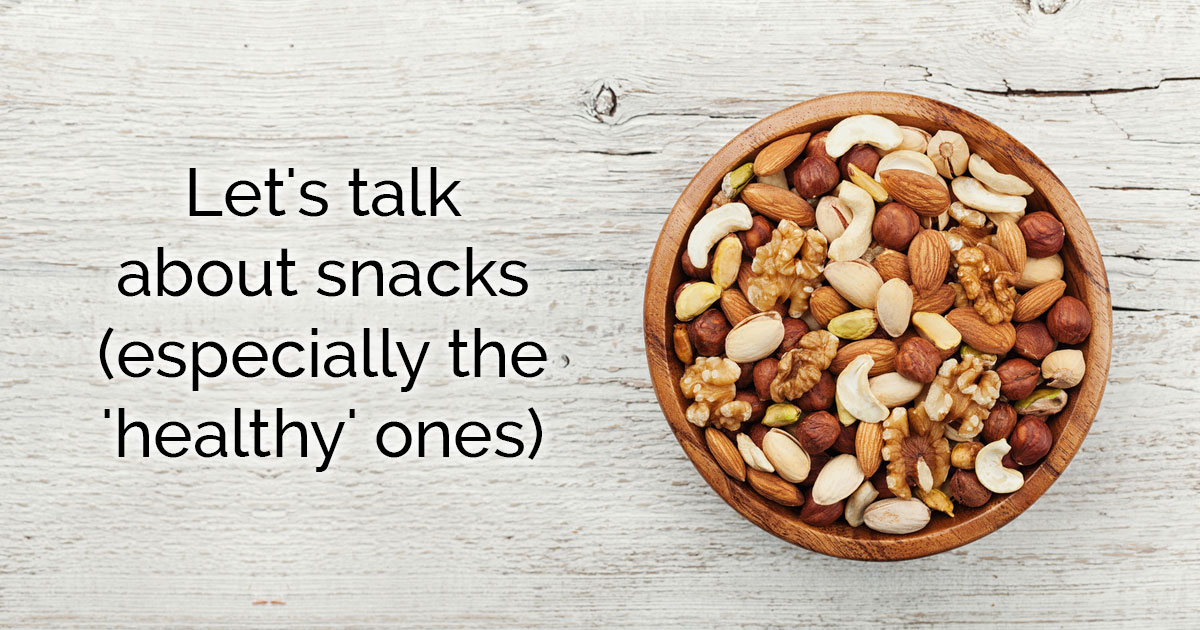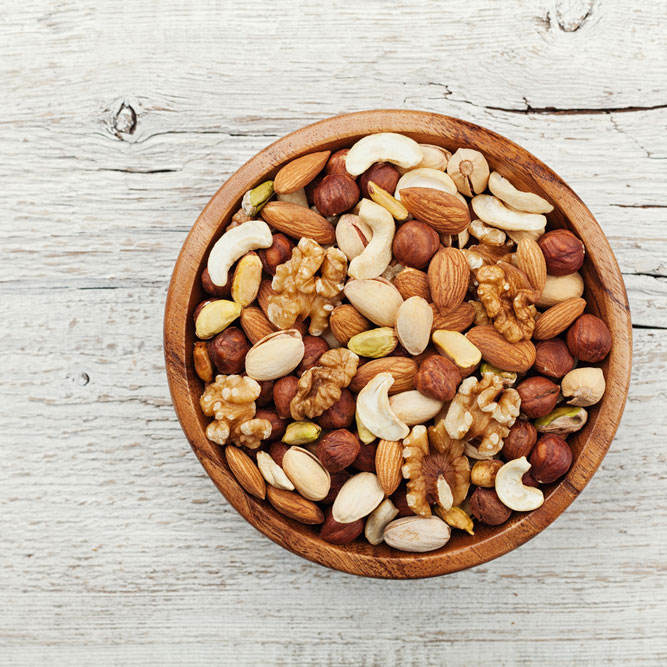
After I announced the details of the next Better Than Yesterday challenge (nutrition) I got quite a few emails and comments from people asking ‘Why no snacking in Week 2 and 3?’
The short answer is ‘Because we need to become more mindful of how we snack’.
The long answer starts … now 🙂
The theory behind snacking being a good thing
My friend Morag neatly summed things up in an email to me so I’m just going to use her words here:
“Most nutrition advice shows that eating smaller often helps maintain metabolic functioning and discourages bingeing or overeating at meal time.”
That’s the theory – and it’s sound. We only have to look at our own behaviour to see that if we get to a mealtime ravenously hungry, we tend to overeat at that meal. Also, if you’ve ever done any kind of fasting, you’ll have experienced the way your brain just doesn’t work when you’re hungry. Which is why it makes sense to do something that keeps our blood sugar at reasonably even levels throughout the day. Grazing/snacking facilitates this.
Here’s where snacking goes wrong
The problem with snacking is basically no one does it in a metabolically functional way. Instead:
- We snack because we’re bored.
- We snack out of habit.
- We snack when we feel the tiniest pang of hunger.
- We snack to dull bad emotions.
But, what if my snacks are healthy?
I’m all for healthy snacks when they act as a small but necessary bridge between nutritionally dense meals.
But, again, the reality is different. Very few people seek out healthy snacks to help ‘maintain metabolic functioning and discourage bingeing or overeating at meal times’.
Instead, what we’re really looking for are ‘guilt-free’ snacks – something we can eat mindlessly and, in theory, not put on weight.
Ergo, it doesn’t matter how healthy your snacks are. If you’re overeating them because ‘they’re healthy’ – this becomes counter-productive.
It’s time to change our thinking about snacking (and nutrition in general)
Deciding what to eat these days is hard.
- Marketers have created a conversation that inextricably links the word ‘diet’ with weight loss.
- Mainstream media reports on nutrition in a sensationalised and reductive way.
- A huge chunk of ‘nutrition research’ is self-serving – funded by companies whose agenda is for us to eat more, not less.
Add to this our collective desire for all things ‘convenient’ and this is what a typical day of eating now looks like for many:
- Cereal for breakfast. Or toast. Or nothing.
- Substantial mid-morning snack full of refined sugar.
- Sandwich for lunch.
- Substantial afternoon snack full of refined sugar.
- Dinner – huge meal because we’re so hungry.
- Evening snack full of refined sugar.
What happens when you remove snacks from the diet above? You get both massive hunger, and a huge sense of deprivation. This leads to a quick return to the ‘normal’ way of eating.
If we start eating more nutritionally dense meals, however, things start to change
Instead of cereal for breakfast try two eggs on toast with a couple of strips of bacon and/or 1/4 of an avocado. No time to make eggs on toast? Make a green smoothie containing leafy greens, fruit + some form of healthy fat and protein source. (Too expensive? It’s about as expensive as that $4 muffin you’re having for morning tea every day.)
With a proper breakfast, most of us can get through to lunch without a snack. We’ll be hungry, but not ravenous and this a good thing! It means we’ve given our digestive system a chance to fully process our breakfast. For lunch we might consume a salad that comprises a protein source (like sliced chicken) plus some kind of healthy fat (olive oil based dressing).
If we’re having lunch at 12.30pm and eating dinner at 7pm, can we get through without a snack? Probably not. But all we should need in the afternoon is a handful of nuts, a piece of fruit, or some cut-up vegetables with hummus.
Then, as boring as it might sound, all dinner needs to comprise is a protein source (palm-sized piece of meat or some legumes) + veggies and/or salad. What about rice, pasta and the like? Look, those things are fine – but they make portion control difficult so just watch out for that.
Want a treat after dinner? Go for it but keep the serving size small.
Eating nutritionally dense meals has benefits that go well beyond weight loss.
- Our skin starts to look better.
- We’re less tired and sluggish and therefore more productive.
- We don’t get sick as much.
But, most importantly, we don’t feel deprived if we cut back on our snacking because we’re not fighting hunger all the time.
How to make our meals more nutritionally dense
In a nutshell, we need to remove highly processed packaged foods from our diets, get back to making things from scratch and eat food as close to the source as possible. Ironically, this is the message all the current, and much-maligned as ‘fad diets’ of the moment – Paleo, Whole 30 and I Quit Sugar – preach. (It’s a sad day when diets preaching ‘Just Eat Real Food’ are seen as ‘extreme’.)
We also need to reacquaint ourselves with healthy fats. These provide a level of satiety that processed foods – full of refined sugars – just cannot.
All that said, it’s taken me many years to move from my own convenience diet of processed foods to just eating real food. And also adjust my thinking to un-demonise fat. Which is why I know doing the above is not as easy as flicking a switch.
What’s a good place to start?
I feel the easiest small step to make is to start beefing out your meals with vegetables. Here’s what’s great about vegetables:
- They’re nutritionally dense.
- They’re not expensive.
- It’s hard to overeat them (with some exceptions).
- You can go nuts filling your plate with them and in doing so, crowd out the ‘bad’ with the ‘good’ – and also remove the feeling of deprivation the half-full plate of dieting can trigger.
- They can be added to every meal – yes, even breakfast.
And that’s really the basis of the nutrition challenge I am running (starting next Monday). Making small and sustainable steps towards more nutritionally dense meals by introducing more veggies into our days.
What’s the point of ‘no-snacking’ goal in Week 2 and 3 of that challenge? Purely to become more aware of the habits we’ve built up around snacking. (As I’ve already mentioned, I’m not opposed to snacking – we just need to do use it functionally, not mindlessly.)
If you want to join in with the challenge, you can do so here.
If you want some tips for getting up to five cups of veggies on to your plate each day, Carly and I cover that in this episode of Straight and Curly. Enjoy!

